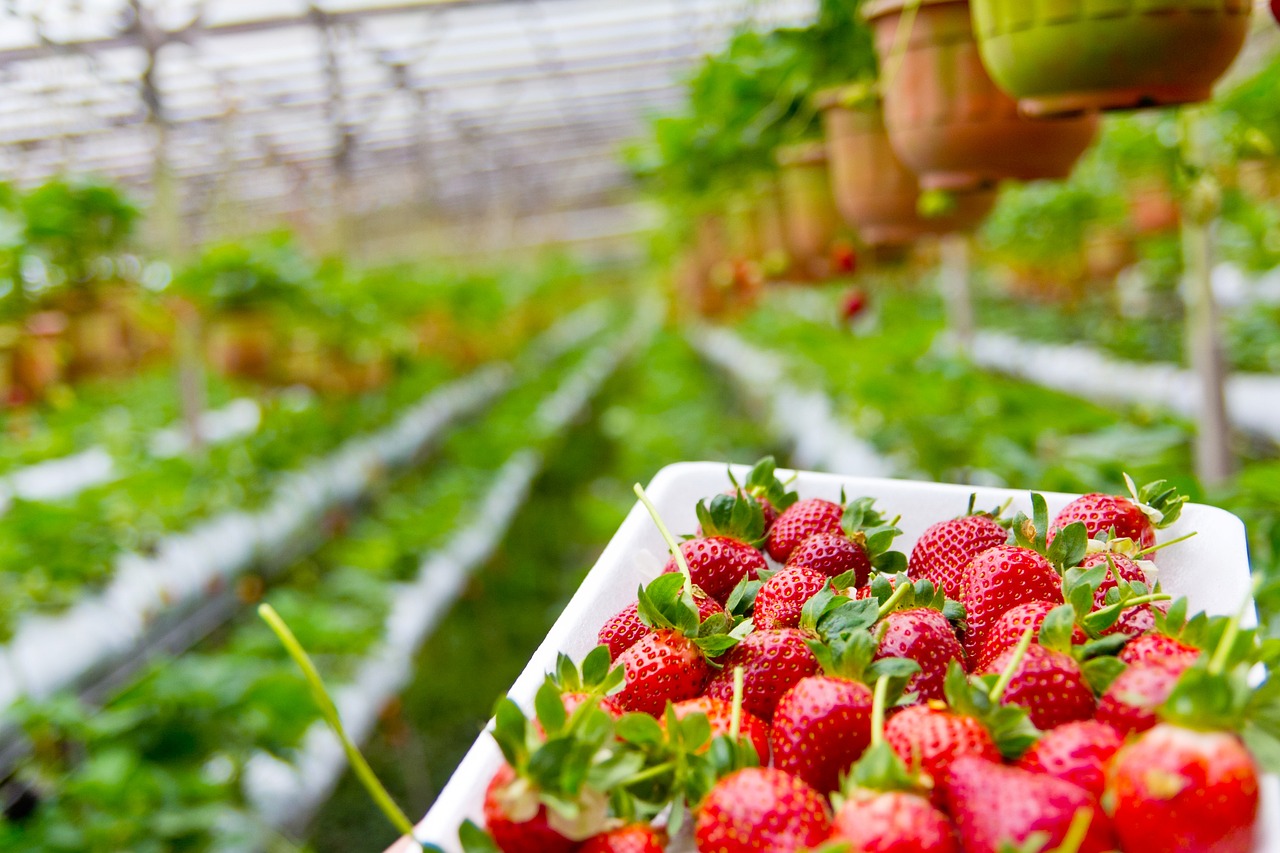California is the largest producer of strawberries in the United States. Strawberry farming is successful in this state because strawberries can be harvested almost year-round. The Golden State is suited for strawberry farming for several reasons:
Climate
The coastal areas of California have historically had the right combination of moisture, sunlight, and temperature for successful strawberry farming. Spanish missionaries brought the first strawberries to California in the late 18th century. The Franciscan friars began cultivating them in their missions along the coast. These regions located in modern-day Monterey Count are the top strawberry producers in the state.
Strawberries grow best in a temperate climate with moderate temperatures and plenty of sunlight. A long growing season with mild temperatures and moderate humidity is also ideal for strawberry cultivation. This allows the plants to produce fruit continuously over several months rather than all at once. California’s mild coastal climate more than fits the bill.
Soil
California has a variety of soils that are ideal for strawberry cultivation. These include sandy loam, clay loam, and loamy sand soils. Strawberry-growing regions of the state have soil that is well-draining and rich in organic matter. This soil helps provide the strawberry plants with the needed nutrients.
Loamy sand soils work best for strawberry farming. These types of soils provide ideal aeration and drainage to prevent waterlogging or root rot. Loam and clay loam soils also work for strawberry farming, but they need good drainage to avoid waterlogging.
The ideal soil for strawberry cultivation should also have a high water-holding capacity, allowing the plants to access water and nutrients throughout the growing season. Soil fertility is also crucial for growing healthy, productive strawberry plants.
Water Supply and Irrigation Systems
Strawberry plants must be regularly watered to thrive, particularly during their fruit-bearing season. When California experienced an agricultural boom alongside the Gold Rush, immigrants used advanced irrigation techniques to grow large, flavorful strawberries. The success of early immigrant farmers inspired other farmers in the area to start growing strawberries using those same irrigation techniques.
California’s legacy of effective irrigation systems and abundant water supply makes it easy to maintain the proper moisture levels for strawberry plants. The state has an extensive network of canals and pipelines that bring water from rivers and reservoirs to the farmlands, ensuring that the crops get the required amount of water.
Technology and Expertise
California’s strawberry farmers use the latest technological advancements when irrigating and harvesting. Farmers and researchers alike continuously work to improve the quality and yield of the harvests. They also develop new varieties of strawberries that are more resistant to pests and diseases and can withstand adverse weather conditions. Some of those new California strawberry varieties also offer a wide range of textures, colors, and flavors.
Many California growers are committed to using sustainable farming practices. They aim to help protect the environment and promote biodiversity. Sustainable farming practices include using natural pest control methods, cover cropping, and other eco-friendly techniques that help reduce synthetic pesticides and fertilizers.
Strawberry farmers use other advanced farming techniques to improve their crops. Some methods include drip irrigation, plastic mulch, fertigation, integrated pest management, and high-tech monitoring. They do this to improve their yields, quality, and environmental sustainability.
Drip irrigation delivers water and nutrients directly to the roots, while plastic mulch regulates soil temperature and conserves moisture. Fertigation delivers nutrients to strawberry plants in precise amounts. Integrated pest management controls pests and diseases naturally, and high-tech monitoring tracks plant growth, moisture levels, and environmental factors.
All these techniques help California growers produce strawberries that are nutritious and delicious. They manage this while minimizing the use of synthetic pesticides, conserving water and soil, and promoting sustainable farming practices.
California: A Legacy of Strawberry Farming
California strawberries are known for their high quality, taste, and texture. The state’s mild climate and advanced farming techniques allow for the production of strawberries that are consistently sweet, juicy, and flavorful.
California is the leading producer of strawberries in the United States, with over 25,000 acres of land dedicated to strawberry farming. The state’s mild climate and advanced farming techniques have made it possible to produce strawberries year-round, providing a steady supply of fresh, high-quality fruit to consumers worldwide.





Be First to Comment